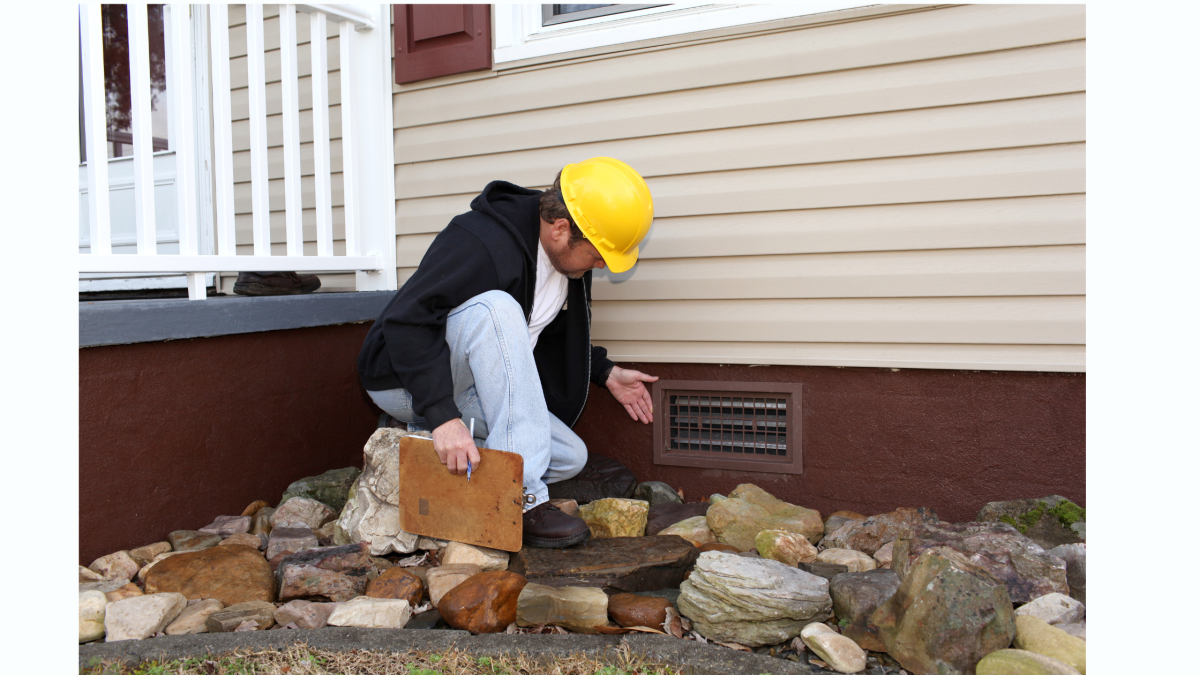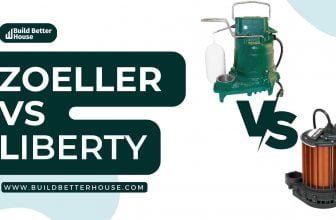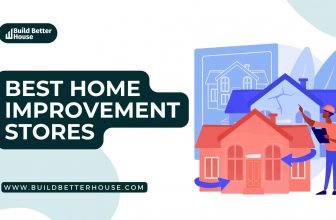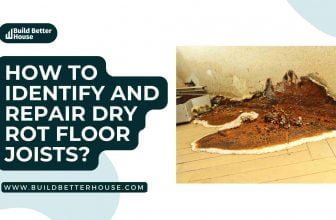Crawl Space Encapsulation Cost: Analyzing Factors and Estimates

Crawl space encapsulation is a process used to create a moisture- and vapor-free environment in the crawl space beneath your home. This procedure helps boost energy efficiency, prevents mold, pests, and other unhealthy elements that may infiltrate your home. Understanding the cost of crawl space encapsulation is crucial for homeowners looking to improve the overall health and comfort of their living spaces.
The cost of crawl space encapsulation can vary depending on several factors, including the size and condition of your crawl space, as well as the complexity of the system and materials used during the installation. On average, encapsulation costs range from $1,500 to $15,000, with a national average of $5,500. Keep in mind that these costs include tools, materials, and labor.

Key Takeaways
- Crawl space encapsulation can improve the health and energy efficiency of your home
- Costs for encapsulation vary depending on factors such as size, condition, and materials used
- Always consider factors like DIY vs. professional installation, as well as financing and maintenance options when evaluating encapsulation costs
Crawl Space Encapsulation Basics
Crawl space encapsulation is a process that involves sealing your crawl space to protect it from moisture, pests, and other potential issues. By installing a vapor barrier, insulation, and proper ventilation, you can greatly improve the overall condition of your crawl space and extend the life of your home’s foundation.
To begin the encapsulation process, you’ll need to start with a thorough inspection of your crawl space. This includes checking for any existing water damage, debris, or pest infestations. Once any necessary repairs and cleanups are completed, you can move on to the installation of a vapor barrier.
A vapor barrier is a plastic or foil sheet that is installed on the walls and floor of your crawl space to prevent moisture from seeping in. This helps to reduce the risk of mold, mildew, and rot, which can not only cause structural damage but also impact your home’s indoor air quality. Make sure to select a high-quality, durable material for your vapor barrier to ensure long-lasting protection.
Next, consider adding insulation to your crawl space. This can help to improve energy efficiency in your home by reducing heat loss through the floor. Insulation can be installed on the walls and/or ceiling of your crawl space, depending on your specific needs and the condition of the space.
Proper ventilation is also an essential part of crawl space encapsulation. Installing vent covers or a ventilation fan can help to regulate airflow and maintain a healthy indoor environment. Some homeowners also choose to install a dehumidifier in their crawl spaces to further reduce moisture levels and maintain a comfortable humidity level.
Lastly, your encapsulation project may also involve installing a drainage system to divert water away from your crawl space and home foundation. This can be especially important in areas prone to flooding or heavy rainfall. A well-designed drainage system can help to prevent water damage and keep your encapsulated crawl space dry and protected.
Remember that crawl space encapsulation costs can vary widely, depending on the size of your crawl space, the materials used, and the extent of work needed. On average, homeowners can expect to pay anywhere from $1,500 to $15,000 for a crawl space encapsulation project.
Factors Affecting the Cost
Materials
The material costs for crawl space encapsulation can vary depending on the quality and thickness of the selected vapor barrier. A vapor barrier typically costs $0.15 to $0.50 per square foot, depending on the thickness of the plastic, ranging from 6 to 20 millimeters. When considering materials, keep in mind that a higher-quality barrier will provide better protection against moisture and humidity.
Labor
Labor costs can be a significant factor in determining the overall cost of crawl space encapsulation. Prices may vary based on the company you choose or your region, but on average, you can expect to spend $1,500 to $15,000 on labor. To get an accurate estimate, always request quotes from multiple contractors and compare their services and pricing.
Size of Space
The size of your crawl space will have a direct impact on the cost of encapsulation. As the space increases in size, the amount of labor and materials needed will also increase, ultimately leading to a higher cost for the project. Remember that larger spaces will require more time and effort, so plan accordingly when budgeting for your project.
Climate
Your local climate plays a role in the crawl space encapsulation cost as well. In areas with higher humidity and moisture levels, you may find that your crawl space is more prone to mold growth and structural damage. A more robust encapsulation system may be required in these climates, potentially increasing the overall cost.
Location
Lastly, your geographic location can impact the cost of crawl space encapsulation. Labor rates can vary significantly between regions, so expect different quotes depending on where you live. Additionally, the accessibility of your crawl space and the availability of contractors in your region could also influence the pricing of your project. Be sure to do thorough research in your area to find the most suitable contractor for your needs.
Cost Breakdown
Crawl space encapsulation costs can vary depending on several factors, including the size of your crawl space, the materials used, labor rates, and the complexity of the project. In general, encapsulation costs range from $1,500 to $15,000, with an average price of $5,500. Let’s break down the common components of this cost.
Materials: The primary materials needed for encapsulation include a vapor barrier and insulation. Vapor barriers cost around $3 to $7 per square foot, with higher-quality barriers commanding a higher price. Insulation costs will also vary based on the type and thickness you choose, but you can generally expect to pay around $1 to $3 per square foot.
Labor: Labor rates for crawl space encapsulation can range from $30 to $200 per hour, depending on the complexity of your project and your location. In addition to installing the vapor barrier and insulation, skilled professionals may need to address other aspects like sealing vents, installing drainage, or repairing foundation issues.
Size and condition of crawl space: The size of your crawl space is a crucial factor in determining the overall cost. Larger crawl spaces will require more materials and take longer to encapsulate, resulting in a higher overall cost. Additionally, the condition of your crawl space may require extra work, such as removing debris, fixing water damage, or addressing pest issues, which can all increase the cost.
Complexity of the system: Some crawl spaces may require additional work, such as installing a dehumidifier, sump pump, or radon mitigation system. These added systems can increase your overall encapsulation cost, so it’s essential to consider them in your budget.
In summary, the cost of crawl space encapsulation is influenced by various factors that contribute to the final price. A proper assessment of your crawl space’s current condition, the necessary materials, and hiring qualified professionals will help ensure a successful encapsulation project within your budget.
Benefits of Encapsulation
Energy Efficiency
When you encapsulate your crawl space, you can expect an increase in energy efficiency. This is because the encapsulation process seals gaps and helps to prevent drafts, making it easier for your heating and cooling systems to maintain a consistent temperature. Furthermore, encapsulating your crawl space can lead to reduced energy bills, as your HVAC system won’t have to work as hard to maintain comfortable temperatures in your home.
Health Benefits
Another significant benefit of crawl space encapsulation is the improvement of indoor air quality. By sealing your crawl space and installing a vapor barrier, you can effectively prevent moisture and mold growth, which can negatively impact your health. This means that you and your family can breathe easier since allergens, mold spores, and other pollutants that thrive in a damp environment are kept at bay.
Structural Integrity
Lastly, encapsulating your crawl space helps protect the structural integrity of your home. By preventing moisture intrusion and potential wood rot, you can mitigate costly repairs and maintain the overall stability of your home’s foundation. This protection is essential in the long run, as water damage can lead to significant issues that can be both dangerous and expensive to repair.
In summary, crawl space encapsulation provides you with numerous advantages, including enhanced energy efficiency, improved air quality, and greater structural stability. By investing in this home improvement project, you can enjoy a healthier, more energy-efficient living space.
DIY vs Professional Installation
When considering crawl space encapsulation, you have two main options: DIY or professional installation. Let’s explore the pros and cons of each approach so you can make an informed decision.
DIY Installation: Choosing to encapsulate your crawl space yourself can save you money upfront. The cost of DIY crawl space encapsulation may start as low as $2,000, depending on the materials you choose and the size of the space. However, there are some potential drawbacks to keep in mind:
- Time-consuming: It could take a significant amount of time to complete the project, especially if you’re unfamiliar with the process.
- Scope of work: Installing a vapor barrier, insulation, sealing vents, and other tasks can be challenging for a novice.
- Risk of error: Mistakes during installation may cause issues such as moisture seepage.
Professional Installation: Hiring a professional contractor to encapsulate your crawl space ensures the job is done right. The average cost of professional crawl space encapsulation is $5,500, but prices may range from $1,500 to $15,000, depending on factors like your location, crawl space size, and the contractor’s pricing structure. Here are the benefits of going the professional route:
- Expertise: Contractors have experience handling these types of projects, ensuring a correctly implemented system.
- Quality materials: Professionals typically use high-quality materials, like the CleanSpace system, which may increase the project’s longevity.
- Warranty: Many professional installers offer warranties for their work, giving you peace of mind.
In the end, deciding between DIY and professional installation largely comes down to your budget, skill level, and the time you’re willing to allocate for this project. Regardless of the route you choose, don’t forget to obtain multiple quotes and research the contractors or materials before making a final decision.
Financing Options and Rebates
When considering crawl space encapsulation, it’s important to be aware of the various financing options and rebates available to help you manage the costs. As the average cost of encapsulation can range from $1,500 to $15,000 or even up to $30,000, finding ways to finance the project can be crucial.
Personal Loans: One option to finance your crawl space encapsulation is through a personal loan. Many financial institutions offer personal loans with varying interest rates and repayment terms. Make sure to shop around and compare rates and terms to find the best loan option for your needs.
Home Improvement Loans: Some lenders offer specialized home improvement loans, specifically designed to help finance projects like crawl space encapsulation. These loans may have lower interest rates or better repayment terms than a standard personal loan, as they are geared toward home improvement projects, making them a great option to consider.
Government Rebates and Incentives: In some cases, you might qualify for government rebates or incentives that can help offset the cost of your crawl space encapsulation. Programs vary by state and local municipality, so it’s essential to research which programs are available in your area. Some energy efficiency improvements, like installing a vapor barrier, might even be eligible for federal tax credits.
Contractor Financing: Some crawl space encapsulation companies offer financing options as part of their services. Depending on the terms and interest rates offered by the contractor, this could be a convenient solution. Reach out to your potential contractor and ask if they have any financing options available.
Remember that it is essential to carefully weigh the pros and cons of each financing option to determine which one is right for your specific situation. Don’t be afraid to ask for quotes and gather all the necessary information before making a decision.
Maintaining Your Encapsulated Space
Now that your crawlspace has been encapsulated, it’s essential to maintain it properly to ensure its effectiveness and longevity. By performing regular checks and keeping up with routine maintenance, you’ll ensure your crawlspace remains a clean, dry, and energy-efficient area in your home.
Inspect the Vapor Barrier: It’s crucial to inspect your vapor barrier for any tears, punctures, or compromised seams at least once a year. Repair or replace the barrier as needed to prevent moisture from entering your crawlspace.
Check the Dehumidifier: Having a properly functioning dehumidifier is vital for maintaining a dry and healthy crawlspace. Check the filter and pre-filter every 4-6 months and replace them as needed. Additionally, make sure the unit is draining properly and the humidity level is set between 30-50%.
Monitor Ventilation: While the encapsulation process seals off external vents to prevent outside air from entering, it’s still essential to have proper ventilation in the crawlspace. If your encapsulation system includes an air exchange unit, be sure to keep it clean and well-maintained for optimal performance.
Examine Insulation: Check your insulation for signs of wear, damage, or sagging regularly. If you notice any issues, repair or replace the insulation to maintain your crawlspace’s energy efficiency.
Keep the Area Clean and Pest-Free: Encapsulation helps to deter pests, but it’s still important to check for signs of infestation regularly. The presence of insects, rodents, or other pests can lead to damage to your insulation and vapor barrier. Cleanliness is key, so remove debris or standing water in the crawlspace as needed to minimize problems.
By staying on top of these maintenance tasks, you’ll ensure your encapsulated crawlspace remains an effective and well-functioning part of your home. Regular maintenance will keep the space healthy and help you avoid potential issues and costly repairs in the long run.
Conclusion
Crawl space encapsulation is an important process to protect your home from moisture, mold, and pests. When planning to encapsulate your crawl space, you can expect to spend between $1,500 to $15,000, with an average cost of $5,500. Keep in mind that the total cost will depend on factors such as the size and condition of your crawl space, the complexity of the system, labor rates, and the materials used during installation.
This investment can protect your home from potential damage and improve overall indoor air quality and energy efficiency. When choosing a professional to handle the project, make sure to compare quotes from different contractors to ensure that you are getting the best deal for your specific situation.
To ensure a successful project, give careful consideration to the quality of materials and the installation techniques that will work best for your specific crawl space. Additionally, it’s essential to properly maintain the encapsulation system after installation, which includes regular inspections and repairs as needed.
By taking the necessary steps to encapsulate your crawl space, you can confidently enjoy the benefits and protect the structural integrity of your home for years to come.
Frequently Asked Questions
What is the average cost of encapsulating a crawl space?
The average cost of encapsulating a crawl space is around $5,500. However, prices can vary from $1,500 to $15,000 depending on factors such as the size of the crawl space, the complexity of the installation, and the materials used.
How do DIY and professional encapsulation costs compare?
When you encapsulate your crawl space on your own, you typically save on labor costs, which can be significant in this process. However, DIY encapsulation may be challenging, as mistakes can lead to improper sealing, moisture issues, or poor ventilation. Professional encapsulation services usually ensure better quality work, but you should expect to pay more for their expertise.
What factors affect crawl space encapsulation pricing?
Crawl space encapsulation pricing is influenced by several factors: the size and condition of the crawl space, the quality and type of materials used, the complexity of the system, and labor rates in your area. Larger, more complex spaces could be more expensive, while simpler projects may cost less.
How long does the encapsulation process typically last?
The time it takes to encapsulate a crawl space depends on the project’s scope and complexity. In general, it may take anywhere from a few days to a couple of weeks to complete a crawl space encapsulation process, depending mostly on the space size, its condition, and the extent of work involved.
What are the main pros and cons of encapsulating a crawl space?
Encapsulating a crawl space has several benefits. It can help maintain a healthy indoor air quality, control humidity levels, protect against pests, and reduce energy bills. The main downside to encapsulation is the cost, as installation can require a significant investment.
Can encapsulation increase my home’s value?
Yes, crawl space encapsulation can increase your home’s value. By protecting the structure from moisture-related damage, pests, and energy inefficiency, encapsulation demonstrates a properly maintained home, which can positively impact your home’s overall value when it comes time to sell.






